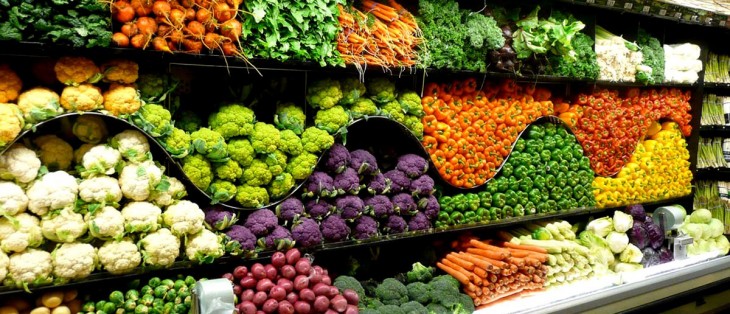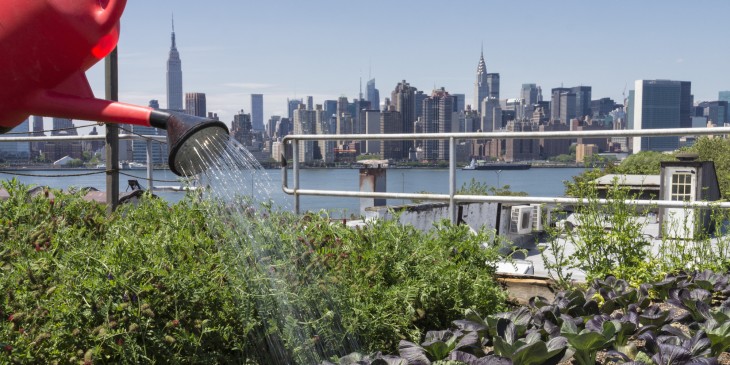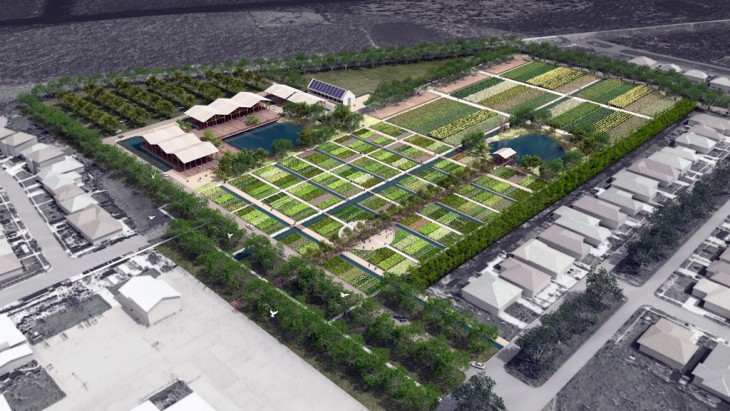City are spreading everywhere. They are spreading along coasts all over the world, invading rural area and modifying ecosystems, whenever is natural or man-made, and that is a trend that is does not seem to stop. It is a challenge at every level, especially considering how complex can be a megalopolis of millions of people, starting from supplying elemental needs of population, such as clean water, energy and food.
Urban planners and architects are playing a key role in defining strategies in development for cities of tomorrow, and often the food issue is neglected, first of all from institutions. In Europe are coexisting many different approaches to food production, according to local economics and cultural traits: For instance France and Germany have a huge commercial strength in industrial food production and distribution, Italy, Spain and Greece have a long tradition in agriculture-related industry and high-end products. In the lasts fifty years, changing in societies led to the rise of Large Chain Organization, exported from US. This system has grew exponentially in last decades, alternating equilibriums between local food suppliers and final clients. Now we reached the point in which if we look at the origin of products that we can buy in a supermarket or in a city central market, we can find Broccoli coming from USA, lemons coming from Argentina and grapes coming from South Africa. The market is so distorted that for big chains suppliers is cheaper to buy vegetables overseas than from locals, and this impacts worldwide pollution, in terms of carbon dioxide emission due to transportation and energy storage. It also concern quality of goods: basically people are eating a one-month old lemon that have crossed the Atlantic Ocean in a container, not to talk about the possibility of cross-contamination between different ecosystems.

Transformation in society due to economic crisis and the growing culture for a healthy lifestyle are slowly changing the behaviour of consumers towards food. The market of biologic goods is growing fast and consumers prefers local products, if they can choose. People are also re-discovering the pleasure of cultivate and growing their own food. This relation between production and consumption has been almost lost in past decades with the rise of urban society, and this is crucial for a good approach to nutrition and to nature. The interest for urban gardens is not simply an economic driven solution to fulfil the base need for food in the cheapest way possible, it is also related to the need of getting in contact with nature, and in certain cases to create communities. All across the world there are plenty of examples of projects of urban community food production, experimental or fully working. Those projects are mainly conceived as community centres more than productive sites. In fact, as those examples are conceived, is not possible to supply the whole amount of food needed in cities. They are more likely experimental sites created for social reason, more than real productive sites.

Urban rooftop farming in Brooklyn, New York
For instance, the Viet Village Urban Farm project represents an effort to re-establish the tradition of local farming in this community after Katrina. New Orleans East was one of the most damaged areas of the city New Orleans during the storms of 2005. In response to the devastation, the community has organized around the idea of creating an urban farm and market as the centre of the community. The farm, located on 28-acres in the heart of the community, will be a combination of small-plot gardening for family consumption, larger commercial plots focused on providing food for local restaurants and grocery stores in New Orleans, and a livestock area for raising chickens and goats in the traditional Vietnamese way. The BP oil spill in the Gulf of Mexico has been an environmental and economic disaster for communities throughout the region. With a heavy base in the fishing industry, the local Vietnamese community has been one of the hardest hit. Local leaders are working to create quality, long-term green jobs to offset the economic costs of the oil spill. The Mary Queen of Viet Nam Community Development Corporation supports New Orleans East, a large Vietnamese and African-American community. It provides business development, affordable housing, urban farm, community organizing, social services, healthcare outreach, and environmental justice programs. Now, it is hoping its plans for a 28-acre Viet Village Urban Farm can help lead New Orleans to a sustainable future. This farm will create green jobs and provide healthy food to the community.

Viet village farming project
Changing completely background, another project can show how food production can be integrated in contemporary cities. In the informal settlements of urban regions in developing countries, finding food can be a daily struggle. Urban agriculture can help solve this problem by providing areas for food production as well as other beneficial public amenities. Using participatory design processes can help stakeholders feel an important sense of ownership in a neighborhood, and impact the successful cultivation and maintenance of productive spaces. With these goals in mind, the Minimum Cost Housing Group at McGill University in Montréal, Canada, the International Network of Resource Centers on Urban Agriculture and Food Security (RUAF) and ETC-Urban Agriculture, based in The Netherlands, began the Edible Landscape Project in 2002. Rosario, Argentina and Colombo, Sri Lanka were two of their site.
Rosario, the third-largest city in Argentina, has a population of over one million, high unemployment and an increasing number of migrants. The project team developed a participatory process where designers, urban agriculture specialists, and residents worked together to envision and design a productive landscape across the city. For one neighbourhood, participatory workshops resulted in the development of an educational-productive square that incorporated a playground, sport fields, a meeting and barbeque area, a demonstrative garden, and an educational footpath. A second neighbourhood with flooding problems created a new garden-park that used irrigation strategies to protect and water the productive landscape. It incorporates a soccer field, playgrounds, new community gardens, and walking paths. Improvements include lighting, fencing, a watchtower, a greenhouse and market area. Fruit trees have also been planted. Neighborhood participants were responsible for constructing, planting, and maintaining their new garden/multipurpose spaces.
Colombo is the largest city in Sri Lanka, with over 600 000 people as of 2001, living in dense conditions with more than 170 people per hectare. A community-based urban agriculture demonstration field was created near one informal settlement. In addition, residents and researchers developed a strategy of small-scale growing spaces using recycled objects as planters. Discarded tires, sliced soft-drink bottles, large plastic vegetable oil containers, and soil-filled plastic bags were filled with vegetables and herbs and placed on railings, squeezed along the street edge, and suspended from overhangs. This provided access to fresh food, and filled the dense urban fabric with greenery, in areas with hardly any available land. These strategies can be reproduced throughout the city and in overcrowded areas around the world.
It is also relevant how urban agriculture could contribute to create a closed circuit of production and waste treatment, at least for the organic component of waste. The practice of recycling organic wastes was historically ubiquitous, and was common in cities. However, in the modern era, cities began disposing of undesirable by-products by removing them to outlying landfills. Recently the benefits of composting have been rediscovered and the practice is now starting to make a comeback in cities across the developed world. Shared composting in community gardens, urban farms, and at other domestic and communal locations has become commonplace. Mid-scale neighbourhood composting perhaps associated with community gardens holds great potential for urban gardeners.
All those examples show how agriculture can contribute to urban development in a non-conventional way, merging the good of countryside and the strength of a dense urban development.